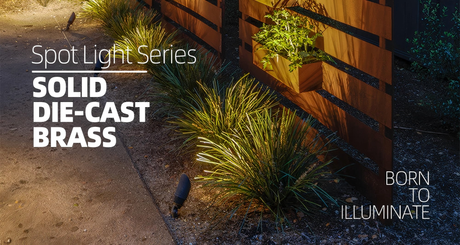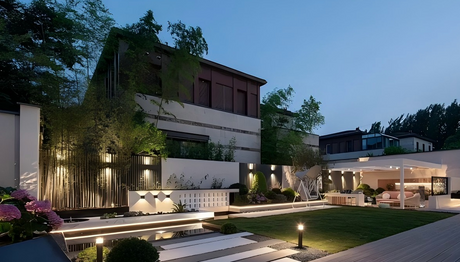When designing a stunning outdoor landscape, lighting plays a crucial role in highlighting natural beauty and creating ambiance. Among the most effective techniques for illuminating trees are uplighting and downlighting. But which one is right for your landscape?
As a professional outdoor lighting supplier, we understand that choosing the best technique can be challenging. This guide will break down the differences, benefits, and best applications of uplighting vs. downlighting trees, helping you make an informed decision for a breathtaking outdoor space.
Understanding Uplighting and Downlighting
Before deciding between the two, it's essential to understand how each technique works.
What Is Uplighting?
Uplighting involves placing fixtures at ground level and directing light upward to highlight the trunk, branches, and foliage of a tree. This method creates dramatic shadows, emphasizes texture, and makes trees appear taller and more majestic.
✅ Best for:
- Large, mature trees with interesting bark or branching structures
- Creating a dramatic, theatrical effect
- Accenting focal points in the landscape
What Is Downlighting?
Downlighting, also called moonlighting, involves mounting fixtures high above (often on trees, pergolas, or buildings) to cast light downward. This mimics natural moonlight, producing a soft, diffused glow that enhances pathways and seating areas.
✅ Best for:
- Creating a natural, subtle ambiance
- Illuminating walkways and gathering spaces
- Smaller trees or dense canopies where light needs to filter through
Key Differences: Uplighting vs. Downlighting Trees
| Feature | Uplighting | Downlighting |
|---|---|---|
| Fixture Placement | Ground level, pointing up | Elevated, pointing down |
| Light Effect | Dramatic, bold | Soft, natural |
| Best Tree Types | Tall trees with strong trunks (oak, maple, palm) | Trees with dense canopies (birch, willow) |
| Energy Efficiency | Can be higher due to direct light | Often more efficient with wider coverage |
| Installation Complexity | Easier (ground-level wiring) | More complex (requires mounting) |
| Common Uses | Accent lighting, focal points | Pathway lighting, ambient glow |
When to Use Uplighting for Trees
Uplighting is ideal when you want to:
✔ Highlight Architectural Trees – Trees with unique shapes, like Japanese maples or palms, look stunning when lit from below.
✔ Create Depth & Drama – The upward shadows make landscapes feel more dynamic.
✔ Improve Security – Bright uplights can deter intruders by eliminating dark shadows near buildings.
Pro Tip: Use warm white (2700K-3000K) LEDs for a natural look, or cool white (4000K-5000K) for a modern, crisp effect.

When to Use Downlighting for Trees
Downlighting works best when you want:
✔ A Natural Moonlight Effect – Soft, diffused lighting mimics nature, reducing harsh shadows.
✔ Functional Pathway Lighting – Illuminates walkways without blinding glare.
✔ Subtle Ambiance for Entertaining – Perfect for patios and outdoor dining areas.
Pro Tip: Position downlights 8-12 feet high for optimal coverage without excessive glare.
Combining Uplighting & Downlighting for Maximum Impact
Why choose just one? Many high-end landscapes combine both techniques for a layered lighting effect.
Example Setup:
- Uplighting on a grand oak tree as a focal point
- Downlighting from nearby trees to illuminate a patio
- Path lights to connect the spaces seamlessly
This approach ensures depth, functionality, and aesthetic appeal.
Choosing the Right Fixtures for Tree Lighting
The best results come from high-quality, weather-resistant fixtures:
🔹 For Uplighting:
- Well lights (buried in-ground) for a clean look
- Spotlights with adjustable beams for precise control
🔹 For Downlighting:
- Bullet lights mounted on branches or structures
- Floodlights with wide beam angles for broad coverage
LEDs are a must—they last longer, use less energy, and provide consistent brightness.

Final Verdict: Uplighting or Downlighting?
The best technique depends on your goals:
- For drama & focal points → Uplighting
- For ambiance & functionality → Downlighting
- For a high-end, layered look → Combine both
Whether you choose the dramatic flair of uplighting or the subtle elegance of downlighting, the right technique can transform your outdoor space into a nighttime masterpiece. At MALORY, we’re committed to helping you design a lighting scheme that enhances your trees’ natural beauty while meeting your functional needs.
Ready to bring your landscape to life?
Explore our premium lighting collection today, or contact our experts for personalized advice—because every tree deserves to shine.









